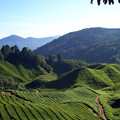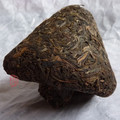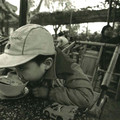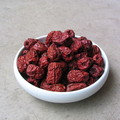Gong fu cha brewing - Tea Masters Blog
„Gongfu cha is an interactive pleasure for our 5 senses.“
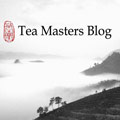
Quotes Tags: Tea infusion, Experiencing tea
„Sight:
Shape of dry leaves: Put the leaves you intend to brew on a small plate or in a tea cup. Then look at the leaves, their color, their shape...
Color of the tea (in the cup): Is this a beautiful, lively color?
Clarity of the tea: How shiny, how pure is the tea brew? “

Quotes Tags: Tea infusion, Experiencing tea
„Smell:
Dry leaves: smell the leaves before you brew them. You can smell them before and after you put them in the heated gaiwan.
The gaibei's lid: lots of fragrant smells accumulate below the lid. Smell and you'll know when the tea is ready. You can also smell it after you pour the tea out.
The tea: interestingly, the brew doesn't smell as strong as the lid or the empty glass!“

Quotes Tags: Tea infusion, Experiencing tea
„Smell:
The hot tea leaves: after pouring the tea from the gaibei. Again, a different smell! You can also smell the empty gaibei: a strong smell means that the leaves could have been brewed a few more times.
The empty cup: you can use it as a wen xiang bei! The empty pitcher can also be used as a big wen xiang bei!“

Quotes Tags: Tea infusion, Experiencing tea
„Taste:
Sweet: on the tip of the tongue. Lingering mellow taste: How does it evolve over time? Acidity/astringency: on the back and on the sides of the tongue. What defect does the tea have? Yun/cloudiness: How is the finish? Are there any special feelings after the tea has left your mouth? Dry feeling: do you experience dryness in the mouth and throat?“

Quotes Tags: Tea infusion, Experiencing tea
„Touch:
You, the person brewing the tea is entitled to touch the tea leaves with (clean) hands. What does this contact tell you about the tea? (For me, a 'heavy', compact leave is a sign for a good quality tea.)
Then there is the pleasure of touching the porcelain and to feel it in your mouth. Do you notice how a cup with a different shape will change the taste and pleasure of the tea? And can you find which cup is best for your tea (I tend to prefer old and thin cups).“

Quotes Tags: Tea infusion, Experiencing tea
„Hearing:
It's the sound of soon to boil water, and then the flowing in the gaibei and the cups. It's also the sound of tea bags, of porcelain. And then it's the sound of silence during the tasting...“

Quotes Tags: Tea infusion, Experiencing tea
„Beyond the senses, tea is also a cultural and spiritual pleasure that can open the doors to many other areas. “

Quotes Tags: Tea infusion, Experiencing tea
„To master the skill of gongfu cha, one needs all his senses and a great amount of concentration. As we gain experience, our movements become more automatic, like rituals. We can brew tea without really thinking, like we drive our car. In a calm setting, our mind is focused on the tea we brew. The choice of a good tea, the harmony of the tea set we use, the way we beautifully arrange the tea table... everything heightens our concentration and peace of mind.“

Quotes Tags: Experiencing tea, Tea infusion, Tao
„Most of the meditation techniques are using the very same principles we need to perform a good gongfu cha: calm, concentration and a ritual. No wonder we can achieve a very similar outcome! Under good conditions, what emerges is our real Me, speaking from the bottom of our heart. We become the Chinese ideal, a zhen ren, a true man (or woman). We have no needs, no desire. We are fulfilled with the simple happiness of a cup of tea.“

Quotes Tags: Experiencing tea, Tea infusion, Tea infusion, Tao, Tea infusion
Theme
Tea by region
We will help you with tea selection.
Do you like quality loose tea?
We will help you to find the right one for you. Be inspired by tea ratings of other tea lovers. Rating stars could help you.


Review your cup of tea.
Review the tea you are drinking and help other tea lovers to find the right cup of tea.



Teas
2008 Xiaguan FT Xizi (Happy) Tuo Cha Raw 100g
 1 review
1 reviewXizi tuo is one of famous Xiaguan Fei Tai products. Used high quality blend of 1-3 years aged materials and...
1997 CNNP Big Red Mark Raw Puerh Cake
 1 review
1 reviewThis cake is called "Da Hong Yin" or Big Red Mark. It's a blend from Banna area tea leaves and the raw...
Quotes
„Yu Shui Cha; 雨水茶. Literally Rain water tea. Summer Tea. Less prized than Spring Tea or Autumn Tea. The flavour is usually less fulsome than Spring tea. Also, it is often oven-dried (hong qing; 烘青) as it is harvested in the rainy season.“



 Shops
Shops Share on Facebook
Share on Facebook



